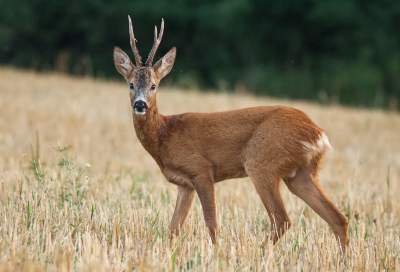Nestled in the westernmost part of the Philippines lies Palawan, an ecological wonderland boasting breathtaking landscapes and an awe-inspiring array of wildlife. Palawan, often referred to as the “last frontier” of the Philippines, is renowned for its unique and diverse ecosystems, both terrestrial and marine. The island is home to a plethora of endemic and rare species, making it a biodiversity hotspot.
From the elusive Palawan Peacock-Pheasant to the enigmatic Philippine mouse deer, the fauna of Palawan is a testament to the richness of nature. In this article, we embark on a captivating journey to discover the fascinating and varied Palawan animals, exploring their habitats, behaviors, and the critical need for conservation efforts to safeguard the incredible biodiversity that graces this pristine island. Join us in unraveling the secrets of Palawan’s wildlife and gaining a deeper appreciation for the natural wonders of this remarkable island.
Table of Contents
A Brief Overview of Palawan and Its Rich Biodiversity:
Palawan, often dubbed the “last frontier” of the Philippines, is an environmental jewel. Located in the MIMAROPA region, Palawan Island is the largest province in the country, comprising the main Palawan Island and surrounding smaller islands. The region is celebrated for its pristine landscapes, crystal-clear turquoise waters, and a remarkable array of biodiversity. Palawan is a biodiversity hotspot, harboring numerous endemic species found nowhere else on Earth.
The island’s unique blend of tropical rainforests, mangroves, limestone cliffs, and coral reefs creates an ideal habitat for a plethora of plant and animal species. From the vibrant marine life in the Tubbataha Reefs Natural Park to the majestic Palawan Peacock-Pheasant gracing the forests, Palawan’s diverse fauna and flora are a testament to the island’s rich ecological heritage.
Geography and Habitat of Palawan:
Palawan’s geography is incredibly diverse, encompassing a range of ecosystems. The island is characterized by a rugged topography, with limestone formations dominating the northern region. These limestone formations give rise to intricate cave systems and breathtaking karst landscapes. The central and southern parts of Palawan are covered in dense tropical rainforests teeming with life, while coastal areas are fringed with mangroves and surrounded by extensive coral reefs.
This mosaic of habitats provides a home for an exceptional array of wildlife, including numerous endemic and endangered species. From the inland mountains to the coastal waters, Palawan’s geography is a cradle of life, highlighting the island’s vital role in global biodiversity.
Overview Of Palawan Animals
1. Philippine Mouse-Deer (Tragulus nigricans):
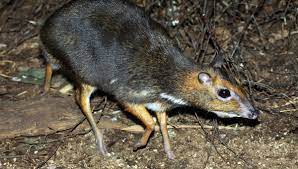
The Philippine Mouse-Deer, also known as the Balabac mouse-deer, is a tiny hoofed mammal native to Balabac Island, part of the Palawan group in the Philippines. Weighing only about 2 kilograms, this elusive creature is one of the smallest ungulates globally, resembling a miniature deer.
Despite its size, the mouse deer possesses impressive agility and keen senses, making it an adept evader of predators. It primarily feeds on leaves, fruits, and flowers, utilizing its slender legs to navigate its habitat, which ranges from forests to grasslands. Sadly, habitat loss and hunting pose significant threats to its survival, leading to its classification as a vulnerable species.
2. Palawan Bearcat (Arctictis binturong):

The Palawan Bearcat, also known as the binturong, is an enigmatic mammal that graces the forests of Palawan. Despite its name, it is neither a bear nor a cat but rather a viverrid. Sporting a bear-like appearance with dark fur and a long, prehensile tail, it spends most of its time in trees, utilizing its tail for balance. This arboreal lifestyle is complemented by scent-marking to communicate with other bearcats.
Their diet consists mainly of fruits, and they play a vital role in seed dispersal, contributing to forest regeneration. Threats such as habitat loss and illegal pet trade have placed this fascinating creature on the vulnerable list, emphasizing the importance of conservation efforts to safeguard its future.
3. Philippine Cockatoo (Cacatua haematuropygia):

The Philippine Cockatoo, also known as the red-vented cockatoo, is a spectacular and critically endangered parrot species native to the Philippines, including Palawan. Recognizable by its stunning white plumage, striking red cheek patches, and prominent crown of feathers, this parrot inhabits forests and coastal areas.
Sadly, habitat destruction and illegal pet trade have drastically reduced its population. Conservation initiatives are underway to protect its remaining habitats, regulate the pet trade, and engage local communities in its preservation. The Philippine Cockatoo serves as a powerful symbol for conservation, urging us to take meaningful action to ensure its survival and the preservation of its habitat.
4. Palawan Hornbill (Anthracoceros marchei):
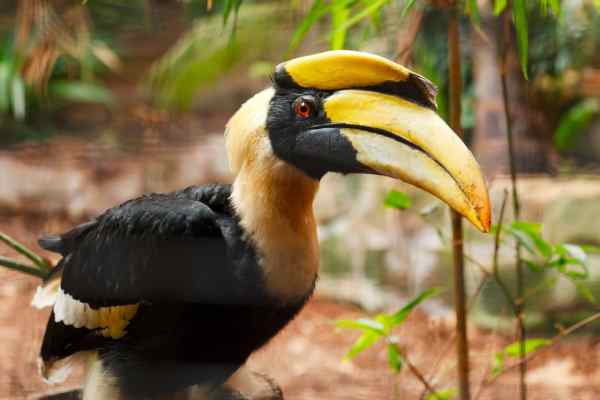
The Palawan Hornbill, a unique bird species native to Palawan, is characterized by its stunning black and white plumage and a prominent casque on its bill. This casque, found in both males and females, plays a role in acoustic signaling and is essential for courtship displays.
As a frugivore, the Palawan Hornbill primarily feeds on fruits and contributes to seed dispersal, playing a vital role in the region’s ecosystem. However, habitat loss due to deforestation and hunting has led to its classification as Near Threatened. Conservation efforts, including habitat protection and community engagement, are crucial for ensuring the survival of this captivating bird and preserving the biodiversity of Palawan.
5. Palawan Peacock-Pheasant (Polyplectron napoleonis):

The Palawan Peacock-Pheasant is an endemic and elusive bird species of Palawan, recognized for the mesmerizing peacock-like eye spots on its tail feathers. Its subtle yet striking beauty makes it a treasure for bird enthusiasts. Sadly, due to habitat loss and hunting, this species is listed as vulnerable. It primarily resides in the forested areas of Palawan, foraging for seeds, fruits, insects, and small invertebrates.
The conservation of the Palawan Peacock-Pheasant is vital to maintaining the ecological balance of Palawan’s forests and ensuring the preservation of its unique avian biodiversity. Conservation efforts focusing on habitat protection and awareness campaigns are imperative to safeguard this magnificent bird and its habitat from further decline.
6. Palawan Scops Owl (Otus fuliginosus):

The Palawan Scops Owl, a small owl species endemic to Palawan, is known for its distinct “hoo” calls during the night. This nocturnal hunter roosts in the dense foliage of trees during the day, camouflaged by its cryptic plumage. Its diet primarily consists of insects, making it an efficient pest controller within its ecosystem.
Habitat loss and fragmentation due to logging and agriculture have resulted in the decline of this species. Conservation efforts, including habitat protection and reforestation initiatives, are crucial for ensuring the survival of the Palawan Scops Owl and preserving the delicate balance of Palawan’s nocturnal biodiversity.
7. Palawan Porcupine (Hystrix pumila):
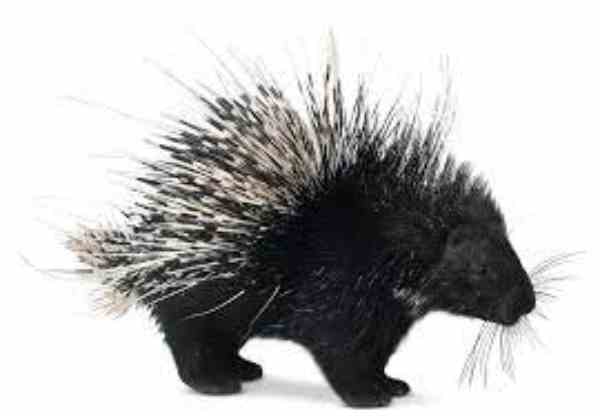
The Palawan Porcupine is a species of Old World porcupine native to Palawan, known for its sharp quills and spiny appearance. This herbivorous creature primarily feeds on a variety of plant matter, including leaves, roots, and fruits. It is a nocturnal animal, venturing out in the night to forage.
The porcupine’s sharp quills act as a defense mechanism against predators, deterring potential threats. However, habitat loss, hunting, and human encroachment pose significant challenges to its survival. Conservation efforts focusing on habitat preservation, monitoring, and education are vital to protect the Palawan Porcupine and its role in the ecosystem.
8. Philippine Pangolin (Manis culionensis):
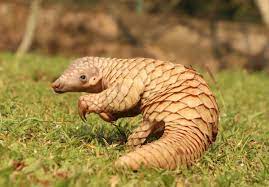
The Philippine Pangolin, also known as the Palawan pangolin, is a critically endangered mammal, highly sought after for its scales and meat, making it the most trafficked mammal globally. This nocturnal creature primarily feeds on ants and termites using its long, sticky tongue.
Its body is covered in tough, overlapping scales, providing protection against predators. Sadly, the illegal wildlife trade and habitat loss have decimated its population. Efforts to combat poaching, raise awareness, and support conservation initiatives are crucial for preventing the extinction of the Philippine Pangolin and ensuring the survival of this unique and threatened species in Palawan.
9. Philippine Forest Turtle (Siebenrockiella leytensis):

The Philippine Forest Turtle, also known as the Palawan forest turtle, is a critically endangered freshwater turtle species endemic to the Philippines, including Palawan. This small, charismatic turtle is recognized for its vibrant yellow and black markings and inhabits freshwater streams and rivers in the lush forested areas.
Due to habitat loss, hunting for the illegal pet trade, and overcollection, their populations have drastically declined. Conservation efforts focused on habitat protection, anti-poaching measures, and community education are vital to saving this unique and endangered species, preserving its habitat, and safeguarding the biodiversity of Palawan.
10. Palawan Stink Badger (Mydaus marchei):
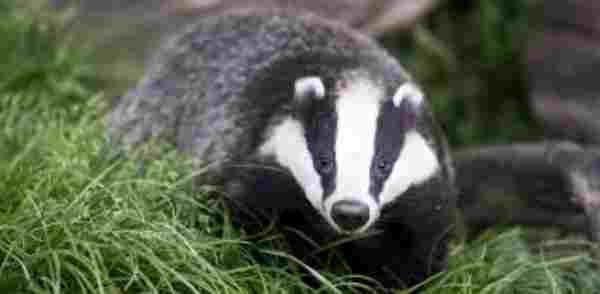
The Palawan Stink Badger, also known as the Palawan stink badger or pantot, is a species of skunk native to Palawan. Despite its name, it is not a true badger but is akin to the stink badgers.
This elusive mammal is known for its strong and unpleasant odor, making it a unique and intriguing creature. It primarily feeds on insects and small vertebrates. Habitat loss and hunting for its distinctive odor glands pose significant threats to this species. Conservation efforts aimed at preserving its habitat and raising awareness about the importance of this elusive animal are essential for its continued survival in Palawan.
11. Palawan Toadlet (Pelophryne albotaeniata):

The Palawan Toadlet is a critically endangered toad species native to the limestone karst formations of Palawan. Recognizable by its distinctive coloration, this toad exhibits varying shades of brown and has an intricate pattern on its skin. Due to habitat loss, habitat degradation, and pollution, its populations have been rapidly declining. Conservation efforts, including habitat restoration and protection, research, and public awareness campaigns, are crucial to preventing the extinction of the Palawan Toadlet and preserving the delicate limestone karst ecosystem it inhabits.
12. Palawan Banded Squirrel (Ratufa palawanensis):

The Palawan Banded Squirrel is an arboreal rodent species endemic to Palawan, known for its distinctive banded fur pattern. This diurnal squirrel primarily feeds on a diet of fruits, nuts, seeds, and occasionally insects. It plays a crucial role in seed dispersal, aiding in the regeneration of the forest. However, habitat loss due to deforestation and hunting for its meat and fur pose significant threats. Conservation efforts, including habitat conservation and anti-poaching measures, are vital for protecting the Palawan Banded Squirrel and preserving its habitat for future generations.
13. Palawan Montane Snake-Eye (Oxyrhabdium leporinum):

The Palawan Montane Snake-Eye is an endemic snake species found in the montane forests of Palawan. Known for its distinct coloration and pattern, this snake is a fascinating and elusive creature. It is highly adapted to its montane habitat, where it preys on a variety of small animals. However, habitat destruction and human encroachment threaten its survival. Conservation efforts focused on habitat preservation, research, and education are crucial to ensure the protection of the Palawan Montane Snake-Eye and its habitat.
Conservation and Environmental Challenges:
Despite its ecological significance, Palawan faces various environmental challenges. Rapid urbanization, unregulated tourism, illegal logging, and poaching pose serious threats to the island’s delicate ecosystems. Overfishing and destructive fishing practices endanger marine life and coral reefs, which are crucial for the local economy and global biodiversity.
Climate change exacerbates these problems, causing sea-level rise and extreme weather events that impact both the terrestrial and marine habitats. Recognizing the urgent need for conservation, organizations, local communities, and the government are actively involved in preserving Palawan’s natural treasures. Conservation efforts include protected areas, community-based conservation initiatives, sustainable tourism practices, and environmental education programs, aiming to ensure the sustainable future of Palawan’s unique biodiversity.
Final Word:
Palawan is a treasure trove of biodiversity and a testament to the awe-inspiring beauty of nature. Its ecological importance goes beyond its borders, influencing global biodiversity and climate resilience. As we stand at a critical juncture in history, it is imperative that we prioritize conservation and sustainable practices to protect Palawan’s unique habitats and species.
By fostering a deep appreciation for the island’s ecological wonders and supporting conservation initiatives, we can contribute to the preservation of this “last frontier” for generations to come. Let us embrace our responsibility as stewards of the environment and work collectively to ensure the survival and thriving of Palawan’s rich and irreplaceable natural heritage.
Reference:
- https://www.travel-palawan.com/nature/wildlife/
- https://www.palawan.gov.ph/environment_nature.php
- https://guidetothephilippines.ph/articles/ultimate-guides/palawan-travel-guide
A motivated philosophy graduate and student of wildlife conservation with a deep interest in human-wildlife relationships, including wildlife communication, environmental education, and conservation anthropology. Offers strong interpersonal, research, writing, and creativity skills.

